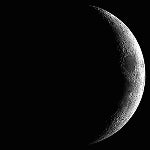Multiple Image Sequences Time-based media is based on a simple premise: a sequence of single frames, when displayed in rapid succession, can give the illusion of movement. This principle is operative whether the "medium" is a flip book, a zoetrope, a film, a hand-drawn cell animation, a video or a computer animation. In every case, the illusion is created by an effect known as "persistence of vision." See the following for a quick experiment and an explanation: http://www.exploratorium.edu/xref/phenomena/persistence_of_vision.html
The Invention of Cinematography The sequences of images developed by Marey and Muybridge and their experiments with methods of projection led directly to the invention of cinematography (motion-picture film technology). In order to recreate a moving image from his still sequences, Muybridge had developed his moving picture projector, the "Zoopraxiscope," as early as 1879. It was first used at Stanford's home and subsequently in Muybridge's lectures. http://www.kingston.ac.uk/Muybridge/muytext5.htm But it must be said, there was no single inventor of the “seventh art”. Instead there was a crowd of researchers, some more active than others, who had been working in different directions since the Renaissance, but always with the aim of studying or recreating movement--by painting, with optical effects, through tricks with mirrors, by photography, and so on. The early history of film and animation is full of inventions that successfully display sequences of still images to give the impression of a moving image. Marey was the inventor of "chronophotography"--a name derived from the Greek, meaning “inscription of time by light”--which in turn gave birth of cinematography, “inscription of movement”. He is the undisputed father of scientific film. However, it was never Marey’s aim to create such a thing as the cinematograph show. On the other hand his assistant Georges Demenÿ was very keen to achieve this, but failed in his attempts. In 1895 the Lumière brothers--the inventors usually credited with creating the first true "motion picture"--benefited from the opening which Marey, Demenÿ, and Edison had created, along with a whole crowd of other “newcomers”--a term used even by Louis Lumière, in a moment of clarity, to indicate his precise position in this business. The cinema very rapidly became an economic battleground, and patents claiming the priority of invention abounded. http://www.expo-marey.com/ANGLAIS/home.html
Film and Video Filmmakers can speed up or slow down our perception of processes of all kinds by altering the rate at which events are either recorded or projected. Marey would often record his subjects at up to 100 frames a second (rather than the conventional 24), and was therefore one of the first to create accurate "slow motion" films. (When a film recorded at 100 frames a second is projected at 24 frames a second, movements are seen at approximately one-quarter their original speed). As the technology has evolved, filmmakers can compress processes that last days or even years into a few seconds using a technique called time-lapse photography. The process involves the use of a camera that can be set to automatically record an image every few minutes. With processes that last a moderate amount of time--say, the phases of the moon--by taking one image every night over the course of an entire lunar month, all of the phases of the moon can be compressed into a short animation. The Lunar and Planetary images of A.Cidadão are a particularly striking example of this technique. Rollover image to
see time-lapse movie of the phases of the moon. For further information information on Cidadão's Lunar and Planetary Observation and CCD Imaging, go to: http://www.astrosurf.com/cidadao/animations.htm While a comprehensive history of film is beyond the scope of this Unit, check out this Chronology from the University of Minnesota: http://www.gen.umn.edu/faculty_staff/yahnke/film/cinema.htm Animation "Animation is far reaching.
It encompasses everything from low-budget flip books to hyperdetailed,
full-length Disney films. There are the cartoons that we watched cross-legged
on Saturday mornings growing up ("What's up, Doc?" "Scooby Snack?" "Captain
Caveman!"), those freaky Burl Ives-narrated stop-action Christmas specials,
and adult favorites like The Simpsons, King of the Hill, and Wallace
and Gromit. There are the studio-backed animations and independents,
traditional 'toons and experimental animations. Block-busting special
effects, which make the Millennium Falcon fly and the Titanic sink,
are their own special breed of animation. Each of these types of animation
has its own difficulties — budget and time constraints, technology limitations,
and so on."
"Animation History,"
Texas A and M: "Origins of American Animation," Library of Congress: http://memory.loc.gov/ammem/oahtml/oahome.html Animation World Network," http://www.awn.com/index.php Clay Animation: http://www.animateclay.com/
|














